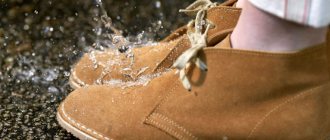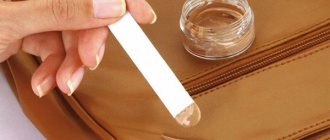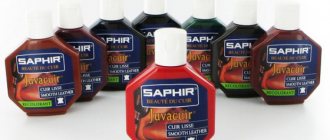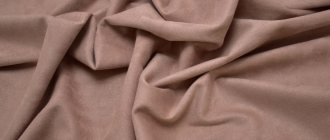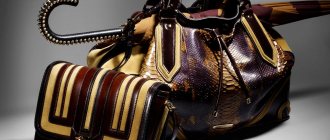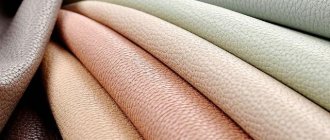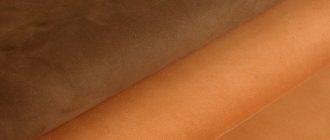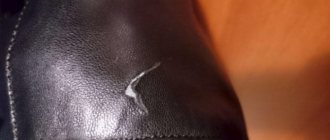What is pressed leather
For clarity, this type of material can be compared with sausage products. A homogeneous fabric is formed from various substandard and very small residues, waste from the production of goods from whole natural leather, and often the same pressed under very high pressure.
The connection of the components occurs through the use of synthetic binder fibers (polyester, polyethylene, polyamide, etc.). When exposed to high temperatures, they melt, which ensures the adhesion of small natural particles.
Synthetic thermoplastic resins are also used in production. Their function is to ensure more reliable gluing of the components and make the structure of the canvas more uniform, and the material itself stronger.
However, these same qualities significantly reduce the moisture and breathability of pressed leather. And if lower moisture conductivity is preferable in some cases, then the lack of the ability to “breathe” can definitely be attributed to the disadvantages of the material when sewing clothes and shoes. In addition, the strength of products made from a material formed from many small components is low and is significantly inferior to its natural counterpart.
What is the main danger of surrogates for the consumer?
Experience shows that 50% of clients who plan to acquire leather furniture do not know the difference between natural leather, artificial leather, and semi-natural (glued) leather.
The term "glued skin" is used to refer to surrogates and is easily misleading.
Companies that produce household furniture often try to disguise its use. Sellers of small personal items such as purses, belts, purses, etc. are even more at ease with these matters. The term "real leather" is almost universally used as a substitute for "bonded leather" for accessories. (This is why the "skin" on inexpensive accessories now peels off after a few months.)
Disadvantages of pressed fabric products
Pressed leather is not suitable for making all products. And this is without taking into account the increased “harmfulness” of its production - the use of chemical resins, synthetic fabric components and high temperatures is negative for everyone involved in the manufacturing process. Add to this the frequent non-compliance with production safety rules and the lack of necessary environmental protection measures.
Bags, belts and other accessories, interior items made from pressed leather will be less durable, soft and elastic than natural ones, but given the difference in cost, you can live with this, and the low price can even be called a significant advantage.
As for clothing, and especially shoes, low breathability and moisture-conducting ability can lead to excessive sweating, increased fatigue, and diseases of the lower extremities and kidneys. In addition, such shoes, when actively worn, quickly lose their original shape and may crack or burst at the bends.
Origin of eco-leather.
Eco-leather is a material of the 20th century. For the first time, the idea of making eco-leather crept into the minds of humanity when the issue of preserving the animal world became acute. Many wildlife activists have protested the killing of animals for leather production. At first, leatherette was used as an analogue, which could not be compared with natural fabric. Therefore, research continued until scientists from the USA and Japan introduced the whole world to a new substitute for natural leather - eco-leather. In terms of its appearance, it was difficult to distinguish eco-leather from natural leather, so it became firmly established in everyday life. After launching the production process, it was possible to significantly reduce the number of animals killed. This breakthrough in obtaining eco-leather had a positive impact on the environment, since leather production generated a lot of waste.
How to distinguish pressed leather from genuine leather
One of the easiest ways is to read the product description:
- in English, genuine leather will be called genuine leather,
- in Italian - vera pelle,
- French manufacturers will write cuir,
- The Germans call it echtleder.
It is also useful to consider special symbols indicating what material the product is made from. Materials of artificial origin are marked with a classic rhombus, while natural ones are marked with a figured one, roughly reminiscent of stretched skin.
However, often such a label is missing, or there is a chance of encountering an unscrupulous manufacturer providing incorrect information.
You should immediately exclude such long-known recognition methods as smell and the possibility of combustion from being 100% reliable. After all, modern technologies make it possible to impregnate artificial analogues with natural leather flavoring; moreover, many types of synthesized fabric no longer melt, but are charred, like natural materials. And not every seller will allow the buyer to check the quality of the goods offered with the help of fire.
Inspection check
The source of the main part of external information for the vast majority of people is vision. Upon examination, the difference between pressed leather and natural leather can be identified in the following ways:
- Bend the product - if it is shoes, it is better in the toe area. Or press the skin quite firmly with your fingers - if it is natural, then the small folds and wrinkles that appear during this process should disappear without a trace as soon as the product straightens.
- Also, when changing the shape of the material, you should pay attention to its color in this place - it changes with natural leather. However, this method of testing is not suitable for one of the most popular colors - black.
- Seam finishing. Manufacturers of products made from natural materials not only do not try to hide what the product is made of, but on the contrary, they strongly emphasize this advantage. Therefore, the seam sections of genuine leather products, unlike pressed ones, are usually left open - not processed or folded.
- The reverse side of genuine leather will be fleecy and suede-like. Leatherette is often smooth, in most cases it has a textile base. However, it can simply be glued onto suede or its imitation.
- The pores on the front surface of natural leather, unlike pressed leather, will be located in the same direction, look similar and organic, but not identical, without repeating the pattern multiple times. In order to avoid groundless suspicions of deception, one should not forget that natural leather is not uniform in its natural color. Therefore, in some cases there may be areas of different tones and shades on it. When identifying the origin of a material, you should pay attention to its structure.
No one should buy "leather" furniture if they don't understand the difference.
Most consumers buy leather furniture because they believe it will be extremely durable. And they are ready to pay for it. But in the end they don't get what they are looking for.
Artificial leather, where a layer of vinyl and polyurethane foam is applied to a specially selected fabric base, is a much more durable material than supposedly natural “glued leather”.
The use of the term "leather" to describe products made from bonded leather is already prohibited by law in some other countries.
If you buy glued leather furniture that starts to peel, retailers generally won't be held responsible.
- This type of problem is specifically excluded from both the seller's and manufacturer's warranties, unless you are "lucky" enough to have your furniture begin to peel after less than a year.
- The extended warranty never covers damage from peeling or cracking of bonded leather.
At this point, all you can do is sue the seller.
There have been many lawsuits regarding bonded skins that began to peel off after a short period of time. Consumers never win in such cases. Honest artificial leather costs (with the exception of some special materials) cheaper than semi-natural surrogates. Eco-leather also has predictable tensile strength and abrasion strength.
Moisture test
Not every seller will allow you to wet a product you haven’t purchased, but you should still have a similar method of figuring out how to distinguish pressed leather from natural leather.
If moisture gets on natural leather that has not been treated with special water-repellent compounds, the material will absorb drops and in most cases darken (depending on the color of the product). The pressed analogue will do neither one nor the other.
Tactile sensations
One of the main distinguishing features of genuine leather is its ability to absorb heat. If you hold it in your hands for a while, it will heat up from the temperature of the human body.
There is also the concept of “fullness” of the material - softness and elasticity; the difference in response to pressure and touch will be noticeable and very obvious.
Types of eco-leather.
- Eco-leather on microfiber . The base is fibers coated with polyester. This material has a porous structure, has moisture-repellent properties, and most importantly, is breathable.
The appearance of eco-leather on microfiber.
- PU leather . This type of eco-leather is absolutely identical to the characteristics of natural leather, and is also not inferior to it in quality. Includes three layers: cotton fabric, discarded genuine leather and a thin, high-grade polyurethane coating.
PU leather appearance
- PVC leather . Dense, elastic, porous, tough fabric. It is made by impregnating the fibrous base with polymer compounds and applying a layer of PVC.
Appearance of PVC leather
- Perforated eco leather . A distinctive feature is the small holes that form a pattern on the canvas.
Perforated leather appearance.
- Self-adhesive . It has an adhesive base, which adds strength and increases the thickness of the material.
Appearance of self-adhesive leather
- Stretch leather . The thinnest and elastic material that stretches without cracking or damage. Includes three layers: cotton fabric coated with a polymer coating on both sides.
Stretch leather appearance.
Smell
As mentioned earlier, this method is not indisputable, especially if you focus on natural aroma. However, the synthesized fabric often has a pronounced chemical odor, pungent and unpleasant. Based on this characteristic, it is not difficult to distinguish pressed leather from natural leather. No matter how long the products that initially have such a smell are aired, a slight trace of it will still remain, and it can be noticed by bringing the product directly to the nose.
Outerwear made from compressed material
The advantages of shoes made of genuine leather are obvious, but what can be said about outerwear?
Cloaks, skirts, trousers and jackets made of pressed leather often look very attractive and dignified. The decision to purchase and use them is best made based on factors such as the amount of money available to purchase the product; how the purchased item will be used in the future; characteristics of a particular human body.
If leather clothing is intended for active, constant wear and there is a desire to use the item for a long time, then if finances are limited, it may make sense to save up for a product made of genuine leather. You can take a closer look at the assortment of natural materials that are not of the highest class - a little more coarsely processed or made from less expensive raw materials (the skins of different animals can have a huge difference in cost).
However, if the item is trendy, designed for one season, or this outfit is rarely in demand in the wardrobe - perhaps it is needed solely for a beautiful photo - pressed leather will allow you to achieve your goal at an affordable price, without having any negative impact on the body.
